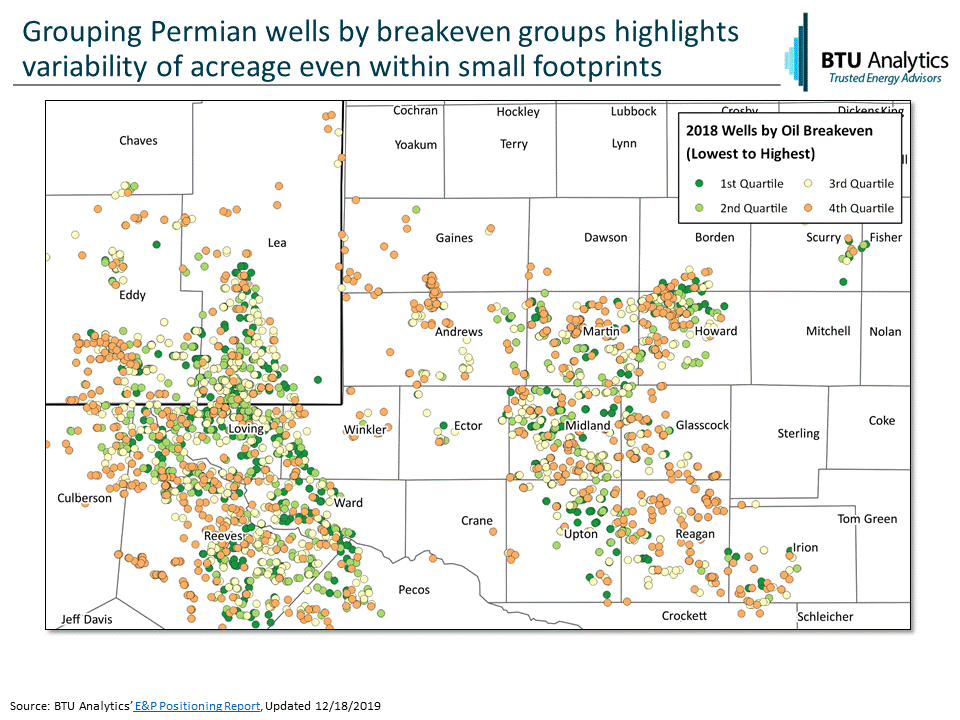The Permian Basin continues to remain in the spotlight as many producers sold off non-core assets and others merged to position themselves to focus on the Permian moving into 2020. Many continue to talk about the basin as if it were a homogenous area where any investment or capital allocation to the region is preferable to the other major US oil plays. While the average breakeven in the Permian may be near $46/bbl WTI, that does not mean all operators are able to achieve this. The payback period or time it takes for a producer or investor to recover their money varies across the Permian and has important implications on individual operators’ ability to grow production and achieve cash flow neutrality in the basin.
The map below shows a sample of almost 5,000 wells turned to sale in 2018 in the Permian and categorizes them into four categories based on BTU Analytics’ well-allocation model and estimated breakeven prices. Wells in the first quartile have an average breakeven near $30/bbl whereas wells in the last quartile had an average breakeven of almost $80/bbl.

Taking this a step further and understanding the varying payback period for each of these quartiles highlights that producers with lower breakeven wells can drill more wells in a shorter time while continuing to strive for cash flow neutrality. The chart below highlights that wells in the top quartile of the Permian Basin have a payback period of less than one year at $55/bbl crude compared to the bottom quartile wells which have a payback period exceeding 20 years. The 1,200 wells in the 3rd Quartile have a payback period of 46 months and the 2nd Quartile is shorter at 21 months.

Pairing these Permian payback periods with oil type curves for each quartile shows that a producer who can consistently drill top quartile wells can almost double their production base at $55/bbl crude prices. Producers who are averaging 2nd Quartile wells would be able to drill half as many wells with lower average productivity, but could still hold production flat to ward of declines.

Despite the recent rally to $60 WTI, there are still many bearish signals in the market and producers continue to feel pressure to exhibit capital discipline and spend within cash flow. While there are several factors at play, breakevens and payback times will help determine who can survive the next year. For more information on individual operator breakevens in the Permian and other regions, request a sample of our E&P Positioning Report.








